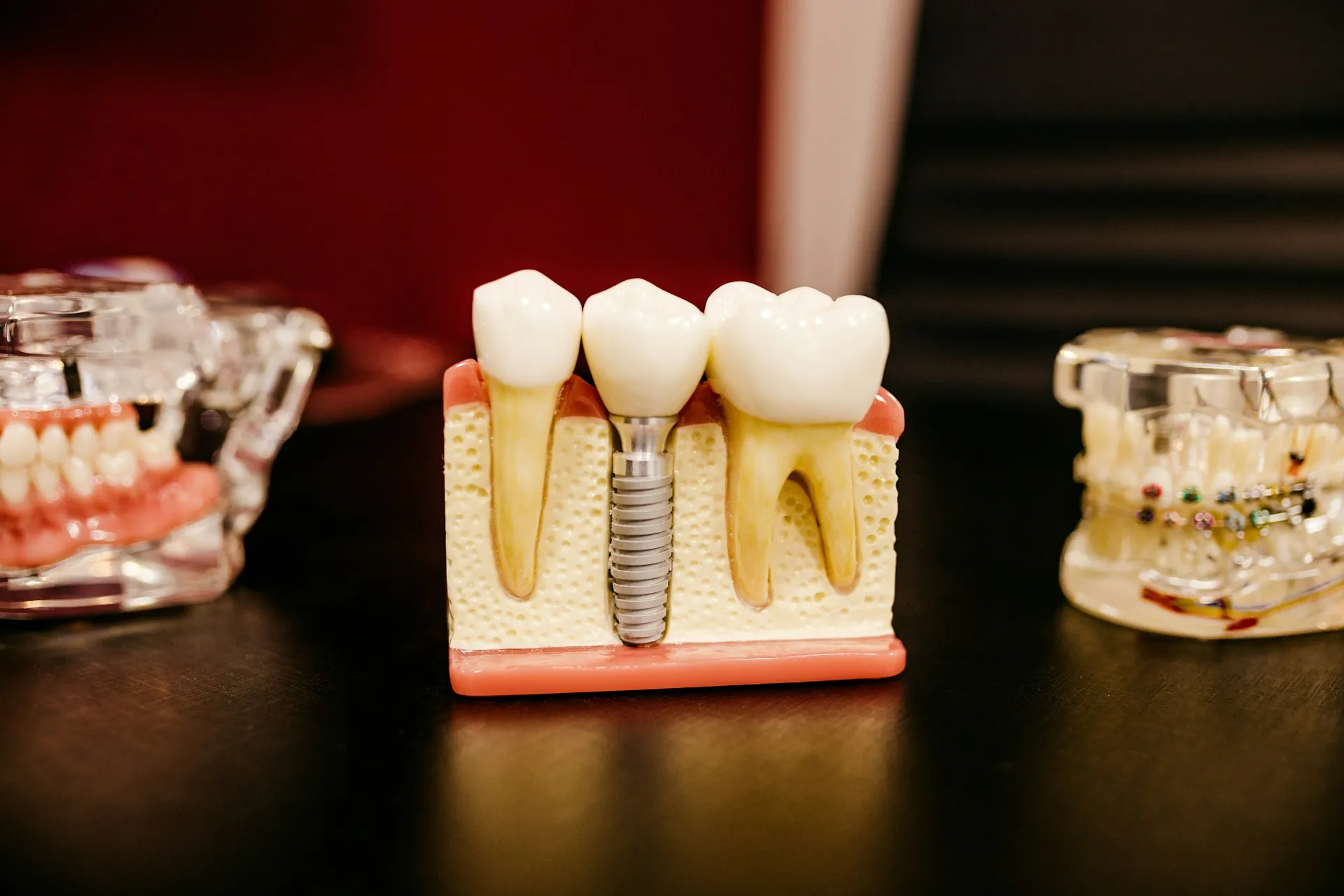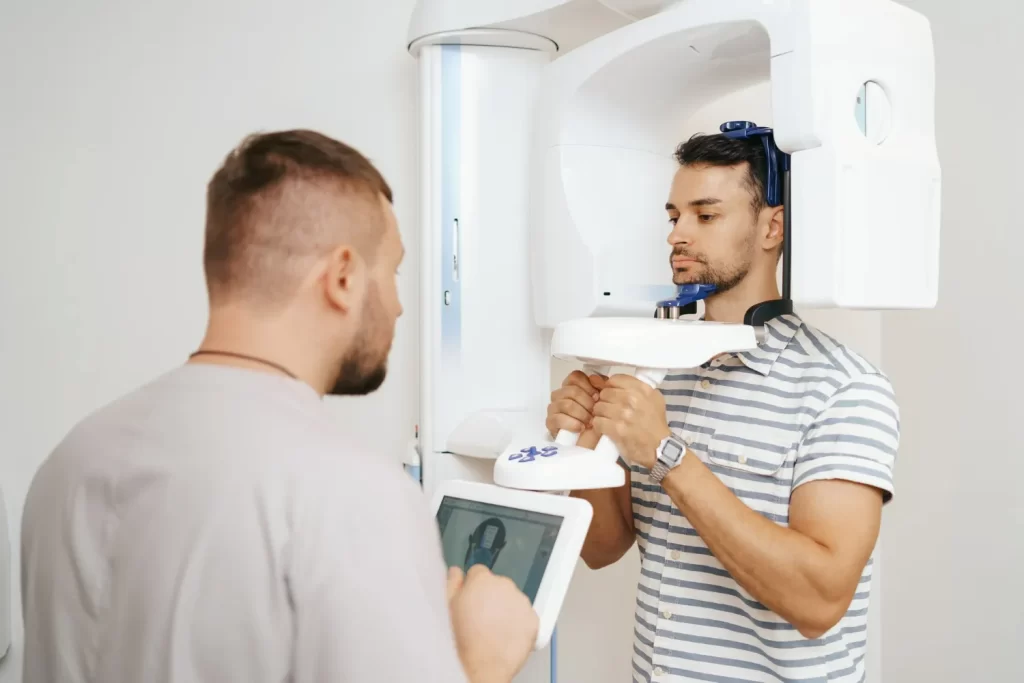Different Types of Dental Implants

Dental implants have become the gold standard for replacing missing teeth, combining longevity, function and aesthetics. Choosing the right implant involves assessing jawbone quality, the number and location of missing teeth, your overall oral health and how soon you need a restoration.
This guide explains the different types of dental implants, loading protocols, recovery, maintenance, technology and costs in a structured format to help you navigate options confidently.
Types of Dental Implants for Single and Multiple Tooth Replacement
Dental implants fall into core categories based on where they sit relative to the bone and what they support. When you book a consultation for dental implants in Sydney, you will review these options to find your ideal solution.
Endosteal Implants
Endosteal implants are screw or cylinder-shaped fixtures placed directly into healthy jawbone. They offer
- High stability and long-term survival
- Versatility for single crowns, bridges and full-arch restorations
- Material options of titanium or zirconia
A typical process involves placing one or more implants, allowing three to six months for healing, then attaching abutments and final crowns or bridges.
Subperiosteal Implants
Subperiosteal implants consist of a customised metal framework that rests on top of bone but under gum tissue. They are used when vertical bone height is insufficient for endosteal placement. Benefits include
- Avoiding bone graft surgery
- Faster overall treatment timeline
Limitations
- Slightly lower long-term stability compared with endosteal implants
Explore more in our implants FAQ.
Zygomatic Implants
Zygomatic implants anchor into the cheekbone rather than the maxilla. They are reserved for severe upper-jaw bone loss or failed grafts
- Avoid large sinus lifts
- Require advanced surgical expertise
Learn more about indications and procedure details at our zygomatic implants guide.
Mini Dental Implants
Mini implants are narrow-diameter fixtures placed with minimal surgery
- Ideal for stabilising removable dentures
- Suitable for very thin bone ridges
Healing is quicker, but they are not typically used for replacing molars under heavy bite forces.
Configuration-Based Solutions
Clinicians combine implants into various support designs
- Single-tooth implants for individual gaps
- Implant-supported bridges across adjacent missing teeth
- Implant-retained overdentures clipped to two to four implants
- All-on-Four full-arch restorations supported by four angled implants
When you consult with Dr Bobby Chhoker, you will explore the best fit for your bite forces and maintenance needs.
Immediate-Load vs Conventional-Load Protocols
The timing of restoration affects both convenience and success rates.
Immediate-load or same-day implants allow placement of a provisional restoration at surgery if initial stability is excellent
- Pros: fewer appointments, instant function
- Cons: strict soft-diet adherence, slightly higher risk of movement
Conventional loading waits three to six months for osseointegration before final restoration
- Pros: predictable outcomes, ideal after grafts or sinus lifts
- Cons: longer treatment timeline, additional appointment
Recovery Timeline and Aftercare Diet
A precise diet plan minimises stress on the implant site:
0–48 hours
- Use cold packs (15 minutes on, 15 off) to control swelling
- Soft foods: yoghurt, smoothies, mashed potato, pureed soup
Days 3–7
- Sutures dissolve or are removed
- Introduce tender foods such as scrambled eggs and porridge
- Maintain protein intake for tissue repair
Weeks 2–8
- Osseointegration continues under the gum
- Avoid hard or sticky foods, choose steamed fish, cooked vegetables, soft grains
After eight weeks
- Gradual return to a normal diet as stability allows
Pain Control and Anaesthesia Options
Comfort is planned from consultation through recovery
- Local anaesthesia for targeted numbing
- Conscious sedation for anxiety or longer procedures
- General anaesthesia in complex or multi-site cases
Post-op pain is managed with ibuprofen, paracetamol and if needed, short-term stronger analgesics with clear dosing instructions.
When Bone Grafting or Sinus Lift Is Required
Preparatory surgery builds a reliable foundation when bone volume is inadequate
- Bone grafting
- Autograft uses your own bone for the highest compatibility
- Allograft uses donor bone to avoid a second surgical site
- Sinus lift elevates the sinus membrane to place implants in the upper molar region
See our sinus lift guide for details
These steps add three to six months but greatly enhance long-term success rates.
Preventing Peri-Implantitis Daily Care Essentials
Daily hygiene prevents inflammation around implants
- Brush twice daily with a soft-bristle brush
- Clean interdental spaces using brushes or a water flosser
- Use an antimicrobial mouthrinse if recommended
Watch for redness, bleeding on gentle probing or discomfort and schedule professional cleaning at the first sign of inflammation.
What the Data Says About Implant Longevity
Long-term survival of single-tooth implants has been demonstrated over decades. A Swedish study examining longevity reported 86% to 98% survival at five to ten years, according to the Australian Dental Association’s review of the Swedish study.
Addressing Tooth Loss in Older Australians Public Health Context
Complete tooth loss affects around one in five Australians aged 65 and over, as detailed in the AIHW’s edentulism prevalence data. These figures highlight the need for accessible, durable solutions such as implants to improve the quality of life and reduce broader health impacts.
Financing Dental Implants Insurance Rebates Payment Plans and Warranties
Implants are a significant investment, but flexible options can spread costs
- Private health insurance rebates under general dental extras
- Interest-free payment plans via clinic or third parties
- In-clinic financing with customised schedules
- Manufacturer warranties covering fixture defects; prosthetic warranties vary
Ask for itemised quotes, separating surgical, prosthetic and review-visit fees to plan your budget accurately.
Digital Planning and Guided Surgery

Advanced digital tools improve precision and reduce chair time
- CBCT 3D imaging maps jaw anatomy, sinuses and nerves
- Virtual planning software simulates optimal implant placement
- CAD/CAM surgical guides translate the plan to minimally invasive surgery
Long-Term Maintenance Recall Schedules
Ongoing care protects your investment
- Hygiene visits every three to six months for implant-specific cleaning
- Annual reviews with radiographs to monitor bone levels and component integrity
- Immediate assessment if you notice mobility, discomfort or tissue changes
Final Thoughts
Understanding the different types of dental implants empowers you to make informed choices with your clinician. At Dr Bobby Chhoker’s practice, you will access comprehensive implant care from bone assessment and augmentation to guided surgery and long-term maintenance tailored to your needs
Ready to take the next step? Visit our contact page to book your complimentary implant assessment and start your journey to a confident, lasting smile.

